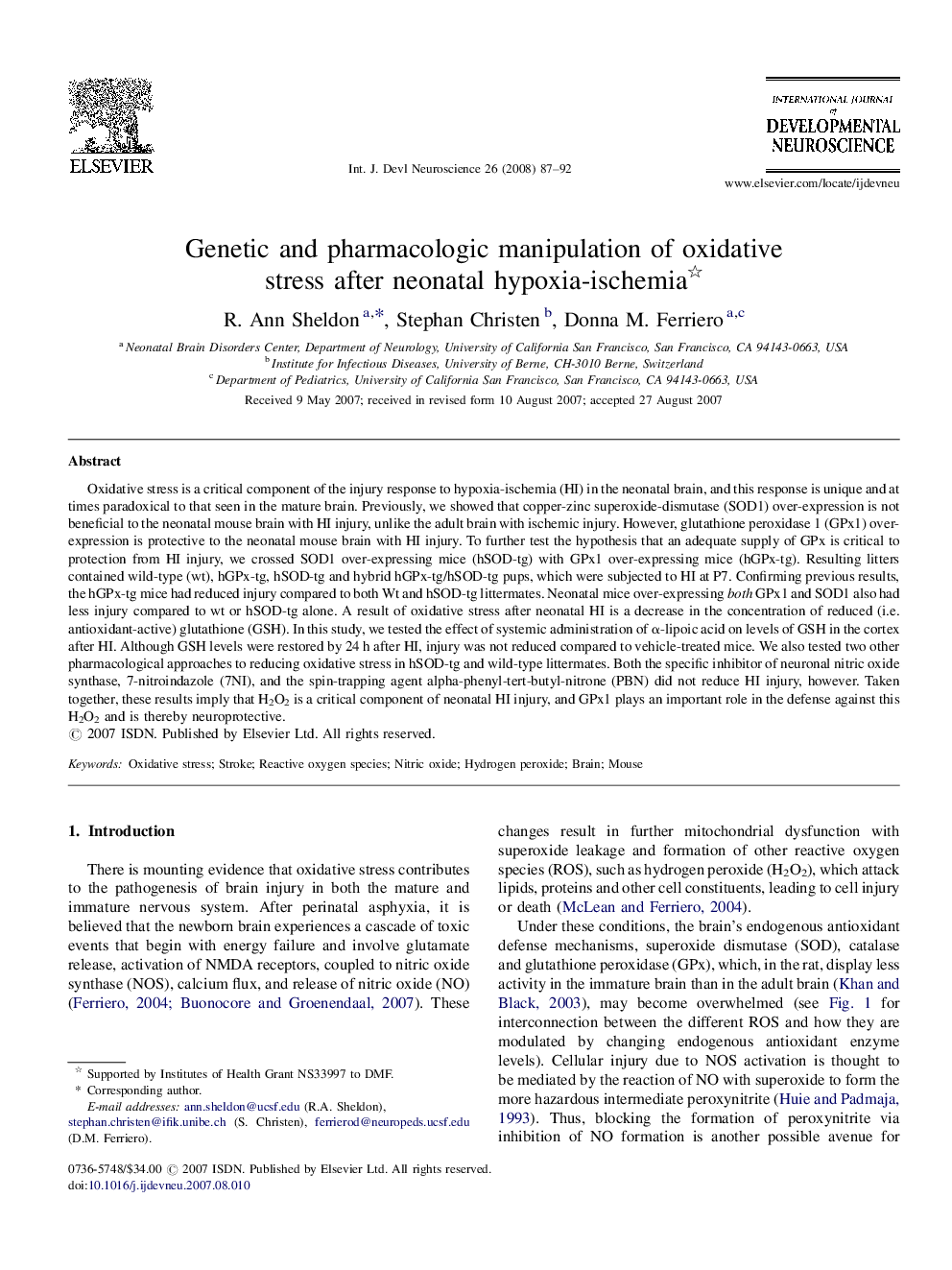| Article ID | Journal | Published Year | Pages | File Type |
|---|---|---|---|---|
| 2787133 | International Journal of Developmental Neuroscience | 2008 | 6 Pages |
Oxidative stress is a critical component of the injury response to hypoxia-ischemia (HI) in the neonatal brain, and this response is unique and at times paradoxical to that seen in the mature brain. Previously, we showed that copper-zinc superoxide-dismutase (SOD1) over-expression is not beneficial to the neonatal mouse brain with HI injury, unlike the adult brain with ischemic injury. However, glutathione peroxidase 1 (GPx1) over-expression is protective to the neonatal mouse brain with HI injury. To further test the hypothesis that an adequate supply of GPx is critical to protection from HI injury, we crossed SOD1 over-expressing mice (hSOD-tg) with GPx1 over-expressing mice (hGPx-tg). Resulting litters contained wild-type (wt), hGPx-tg, hSOD-tg and hybrid hGPx-tg/hSOD-tg pups, which were subjected to HI at P7. Confirming previous results, the hGPx-tg mice had reduced injury compared to both Wt and hSOD-tg littermates. Neonatal mice over-expressing both GPx1 and SOD1 also had less injury compared to wt or hSOD-tg alone. A result of oxidative stress after neonatal HI is a decrease in the concentration of reduced (i.e. antioxidant-active) glutathione (GSH). In this study, we tested the effect of systemic administration of α-lipoic acid on levels of GSH in the cortex after HI. Although GSH levels were restored by 24 h after HI, injury was not reduced compared to vehicle-treated mice. We also tested two other pharmacological approaches to reducing oxidative stress in hSOD-tg and wild-type littermates. Both the specific inhibitor of neuronal nitric oxide synthase, 7-nitroindazole (7NI), and the spin-trapping agent alpha-phenyl-tert-butyl-nitrone (PBN) did not reduce HI injury, however. Taken together, these results imply that H2O2 is a critical component of neonatal HI injury, and GPx1 plays an important role in the defense against this H2O2 and is thereby neuroprotective.
